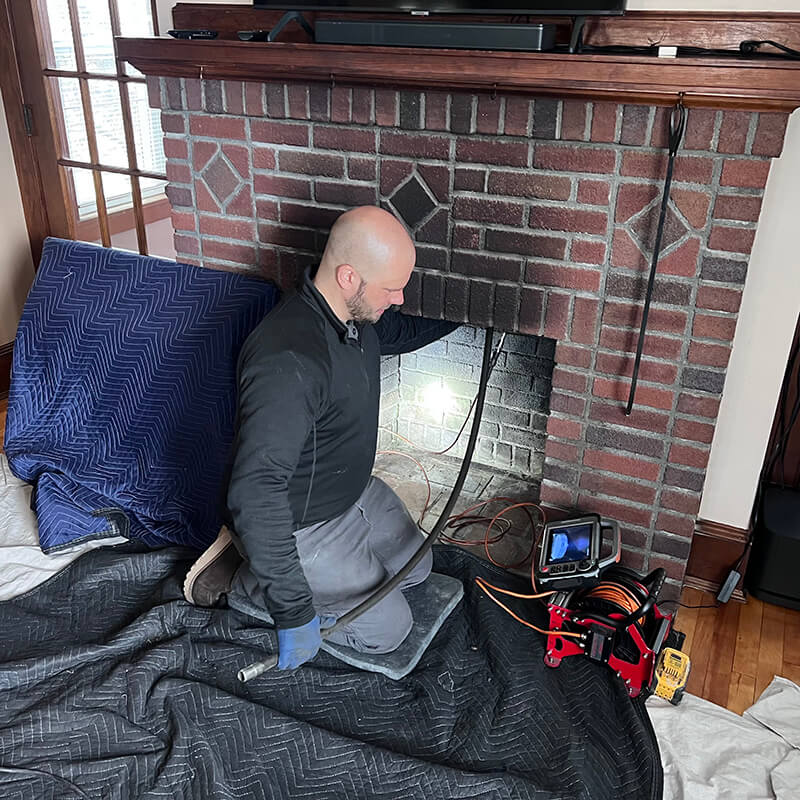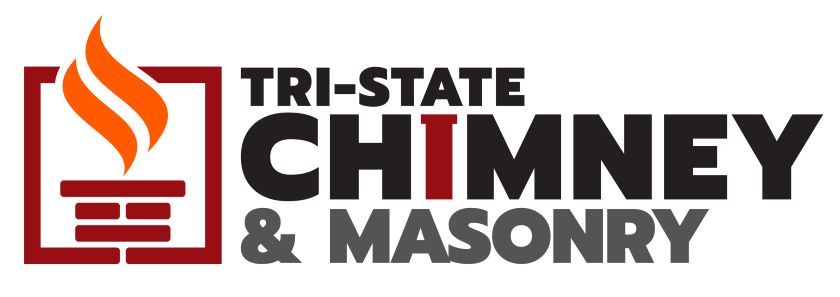Chimney Services
Professional Chimney Specialists Serving Massachusetts For Over 20 Years!
We provide expert chimney services to ensure your home stays safe and warm. Our skilled team offers chimney inspections, cleanings, repairs, and installations to keep your chimney functioning efficiently. Whether you need a routine cleaning, repairs from wear and tear, or a complete chimney rebuild, we ensure your system meets all safety standards and operates smoothly, preventing potential hazards like blockages or chimney fires.
- 100% Satisfaction
- Financing Available
- Fully Insured

Chimney Cleaning & Repair Specialists
Chimney Inspections, Sweeping & Cleaning
Maintaining your chimney is crucial for the safety and efficiency of your home’s heating system. Regular inspections by a professional chimney sweep can help identify any potential issues before they become costly repairs or worse hazards to your home and family.
Tri-State Chimney & Masonry uses a Chimney Flue Inspection camera to perform thorough inspections of existing chimneys. We perform these chimney inspections on every chimney cleaning job we do to ensure your chimney is in perfect working order.
Chimney Inspections
We perform Level 1 and Level 2 inspections.
- A Level 1 inspection is performed to verify that a chimney or flue is suitable for continued use under the same conditions and with the same or similar appliance(s). During a Level 1 inspection, the chimney service technician examines the readily accessible portions of the chimney’s exterior and interior, as well as accessible parts of the appliance and its connection to the chimney. The technician checks for the overall soundness of the chimney structure and flue, the proper installation and connection of the appliance, and ensures the chimney is free of obstructions and combustible deposits.
- A Level 2 inspection is required whenever changes are made to the chimney system. These changes may include a switch in fuel type, modifications to the flue’s shape or material (such as relining), or the installation or replacement of an appliance with one of a different type, input rating, or efficiency. A Level 2 inspection is also required when a property is sold or transferred. It is additionally necessary after an operational malfunction or an external event that may have caused damage to the chimney. Such events include building or chimney fires, seismic activity, and severe weather.
After the inspection the homeowner will receive a detailed inspection report, outlining any findings from the inspection and may include recommendations for repairs and maintenance. If the inspection report identifies any issues or recommended repairs, it is essential to address them in a timely manner.
Chimney Sweeping
Once the initial inspection is complete, we will begin cleaning. During the chimney sweeping process, the technician will use specialized brushes and rods to scrub the inside walls of the chimney flue, loosening any creosote, soot, and debris that have built up over time. Depending on the type and size of your chimney, the sweep may start from inside your home at the base of the chimney or from the roof, working from the top down. Tri-State Chimney & Masonry uses advanced methods to keep soot and debris contained so the inside of your home stays clean.
When all the debris has been dislodged, it is collected and vacuumed out to prevent it from entering your home. Tri-State Chimney & Masonry are trained to handle this process in a way that keeps your home as clean as possible, using drop cloths to cover floors and sealing off the fireplace opening to prevent any mess from escaping into the room.
Annual Cleanings
We recommend annual cleanings as a crucial part of maintaining a safe and efficient home heating system. This prevents dangerous creosote buildup, improving airflow, and reducing the risk of carbon monoxide poisoning. Chimney cleaning helps protect your family’s health and safety.
We will perform a meticulous chimney cleaning with all necessary tools and chemicals to remove dangerous creosote deposits from inside the chimney. Creosote is a natural biproduct of burning wood and is a type of soot that can form in your chimney as you use your wood burning fireplace or wood stoves. Creosote is the most dangerous element with 90% of chimney fires are caused by creosote build-up.
There are 3 levels of creosote build-up in a chimney: Level 1, Level 2 and Level 3 (Level 3 being the most dangerous.) When creosote build-up reaches Level 3 it is typically glazed creosote or a gummy substance in which case we use rotary equipment to perform the chimney cleaning and sweeping.
We guarantee our work on every job.
Liner Installation
We will reline your flue to prevent deadly carbon monoxide gases from penetrating through your unlined or deteriorating chimney walls. We install UL Stainless Steel Liner Systems for gas, oil and solid fuel appliances.
Chimney Cap & Damper Installation
Tri-State perform chimney recapping and reflashing. We have a Lifetime Warranty on chimney caps and top sealing damper installation. Custom chimney caps available in both stainless steel and copper.
Chimney Re-pointing
Chimney re-pointing involves removing deteriorating mortar and replacing it with new mortar. This seals cracks and exposed joints, preventing water infiltration and potential damage. It also reinforces the structure, extending the chimney’s lifespan.
Waterproofing
Tri-State Chimney Service can waterproof your brick, block and/or stone fireplace and chimney so water entry points are properly sealed. This can save tens of thousands of dollars of water damage to the home, particularly if the water entry point is at the roof line. All work is backed by a 10 Year Warranty.
Complete Chimney Rebuilds
Tri-State Chimney Service can provide a full restoration chimney rebuild from the roof line or from the ground up. Whether your chimney is brick, block or stone, we can rebuild your chimney with the latest masonry techniques. All work is backed by our 10 Year Warranty.
